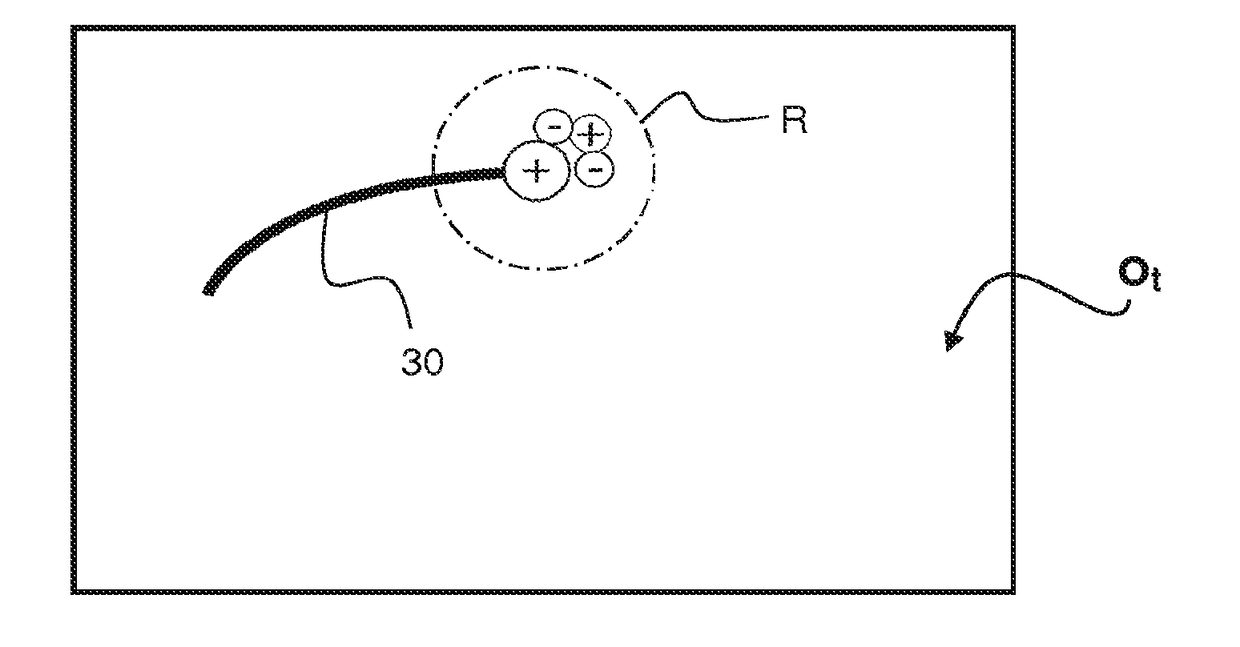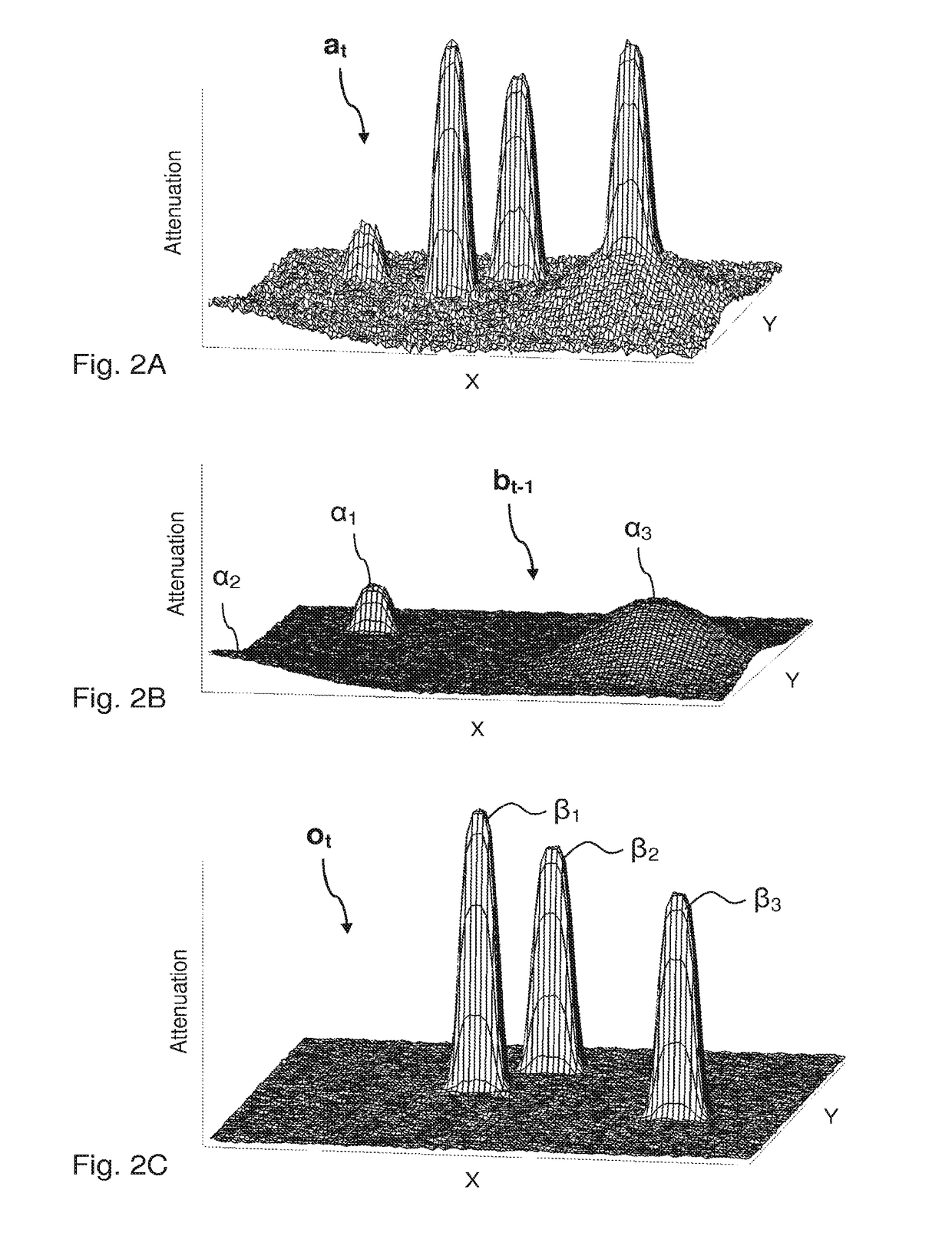Tracking objects on a touch surface
a technology of touch surface and object, applied in the field of tracking objects on the touch surface, can solve the problems of difficulty in properly detecting the touch surface at all, the degree of interaction between the touching object and the touch surface may vary both, and the task is demanding, so as to improve the accuracy of potentially false peaks
- Summary
- Abstract
- Description
- Claims
- Application Information
AI Technical Summary
Benefits of technology
Problems solved by technology
Method used
Image
Examples
Embodiment Construction
[0054]Before describing embodiments of the invention, a few definitions will be given.
[0055]A “touch object” or “touching object” is a physical object that actively or intentionally touches, or is brought in sufficient proximity to, a touch surface so as to be detected by one or more sensors in the touch system. The physical object may be animate, e.g. a finger, or inanimate.
[0056]An “interaction” occurs when the touch object affects a parameter measured by the sensor.
[0057]An “interaction strength” is a relative or absolute measure of the degree of interaction.
[0058]An “interaction map” or “interaction pattern” is a two-dimensional (2D) distribution of interaction across the touch surface, or a portion thereof. If the “interaction map” contains attenuation values, it is also denoted an “attenuation map” or “attenuation pattern”.
[0059]A “touch” denotes a point of interaction as seen in the interaction pattern. A touch may be associated with different touch parameters, such as a loca...
PUM
 Login to View More
Login to View More Abstract
Description
Claims
Application Information
 Login to View More
Login to View More - R&D
- Intellectual Property
- Life Sciences
- Materials
- Tech Scout
- Unparalleled Data Quality
- Higher Quality Content
- 60% Fewer Hallucinations
Browse by: Latest US Patents, China's latest patents, Technical Efficacy Thesaurus, Application Domain, Technology Topic, Popular Technical Reports.
© 2025 PatSnap. All rights reserved.Legal|Privacy policy|Modern Slavery Act Transparency Statement|Sitemap|About US| Contact US: help@patsnap.com



